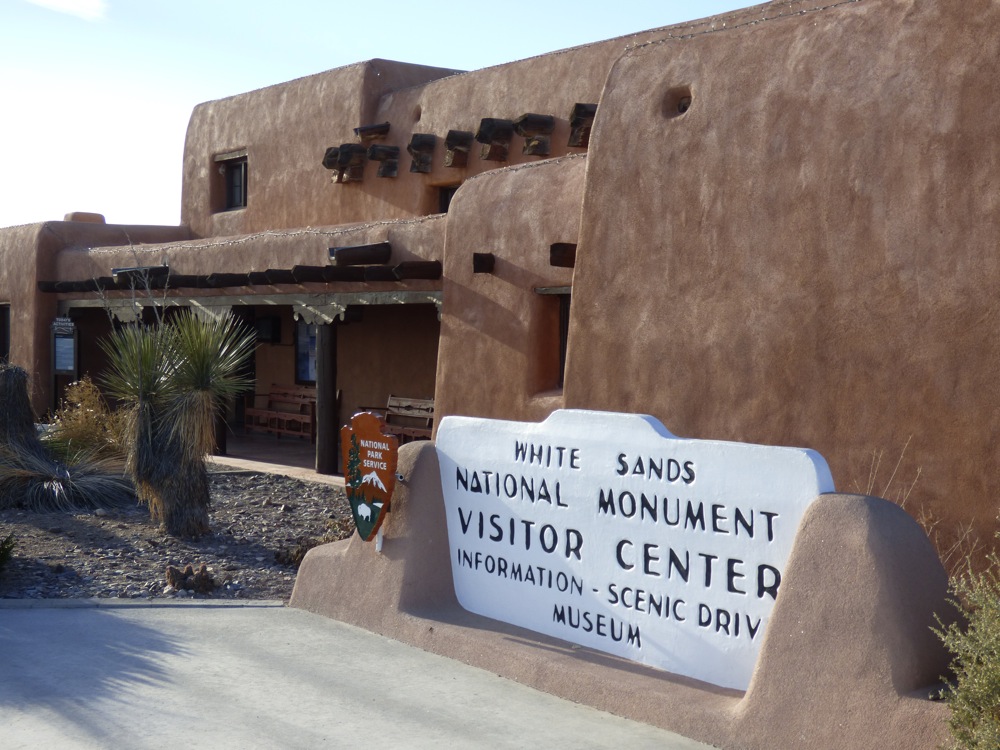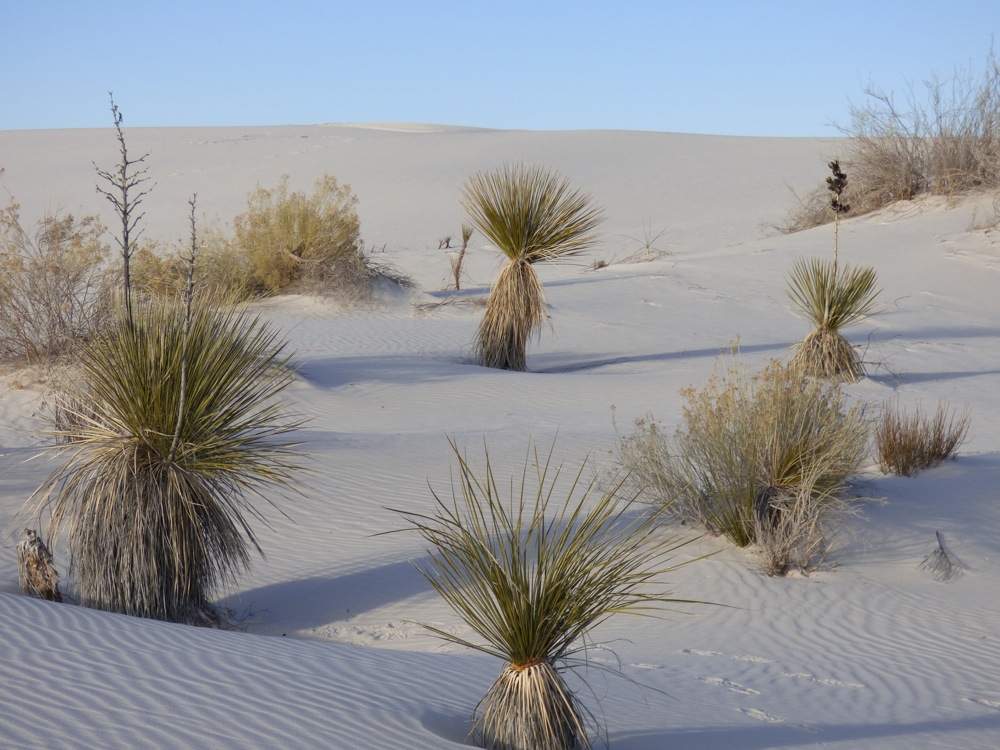I’ve spent the last couple of months as an interpretive volunteer at magnificent White Sands National Monument, 13 miles south of Alamogordo in Southern New Mexico. This monument showcases the largest field of dazzling white gypsum sand dunes in the world. It not only offers a one-of-a-kind visitor experience, but its convenient location has allowed me to again visit some of the “Land of Enchantment’s” other fascinating attractions within driving distance.
While most of the country has been suffering through frigid temperatures and mountains of snow and ice, we’ve had truly wonderful winter weather with lots of bright sunshine and daytime temperatures mostly in the 50ºs and 60ºs. I’ve been so pleased that I’m planning to return for another stint here in the fall.
Only 41% of the 275 square miles of gypsum dunes are actually inside the Monument itself. The remainder amount lies in the immediately adjacent, 4,000-square-mile White Sands Missile Range. Regardless, visitors here have an opportunity to experience awe-inspiring panoramas of pure white splendor. You can also learn about the many species of plants and animals that have become acclimated to this most unusual of desert environments.
During my stay, I witnessed many magnificent sunsets against a backdrop of wind-rippled dunes below the distant San Andres Mountains. The monument’s beauty and fascinating environment make it easy to see why White Sands is #1 in annual visitation.
Interestingly enough, however, an incident occurred recently which necessitated that the Monument itself be closed temporarily. Missile tests are a relatively common occurrence here, during which access to the Monument is temporarily suspended for an hour or two, but on Friday, February 7, an unmanned, remotely-piloted QF-4 drone aircraft crashed in a central area of the Monument during the test maneuvers. No one was injured or was ever in any danger, but the QF-4 is a converted, full-sized, Vietnam-era F-4 fighter plane. Consequently, the Air Force Recovery Team’s task of investigating the crash and restoring the environment required about nine days to complete. Happily, the Monument was able to reopen on Sunday, February 16.










